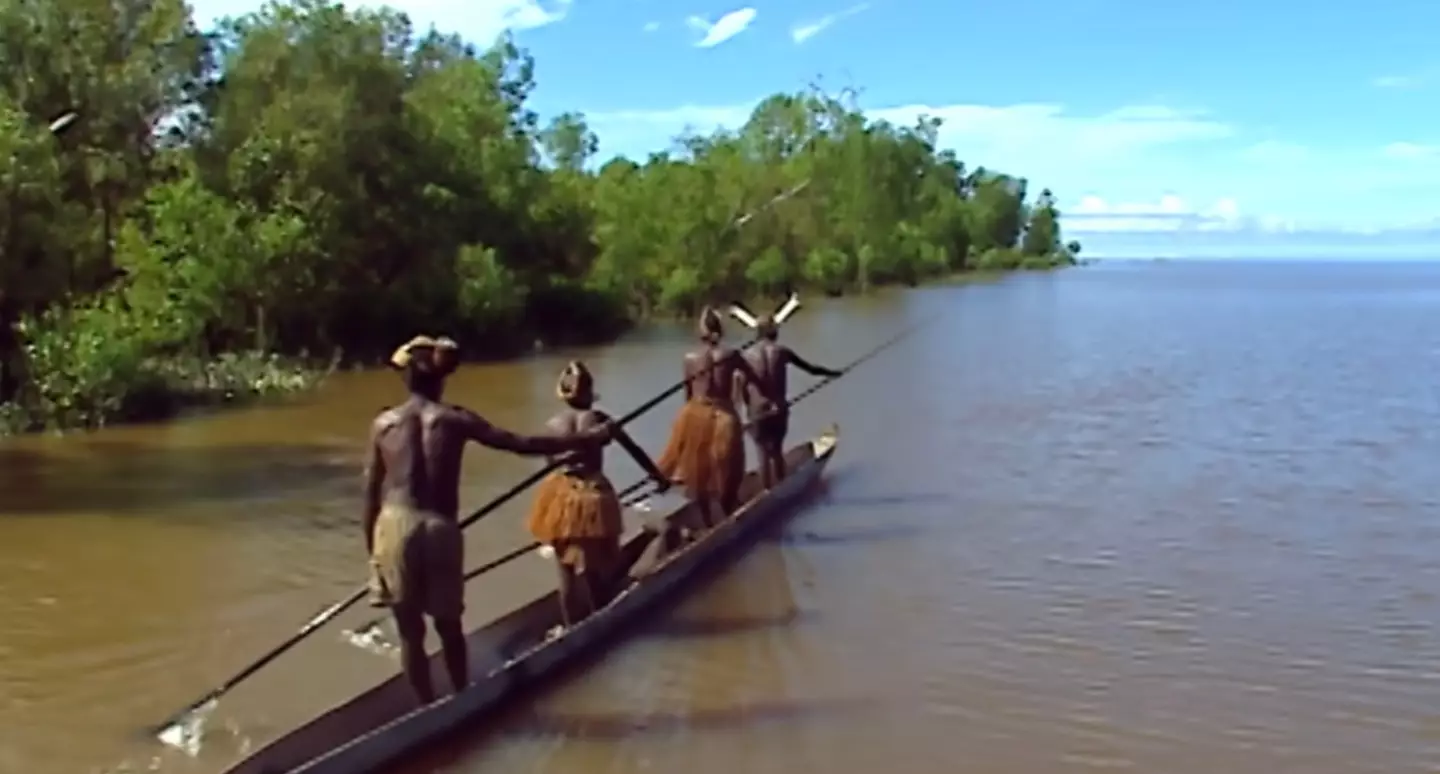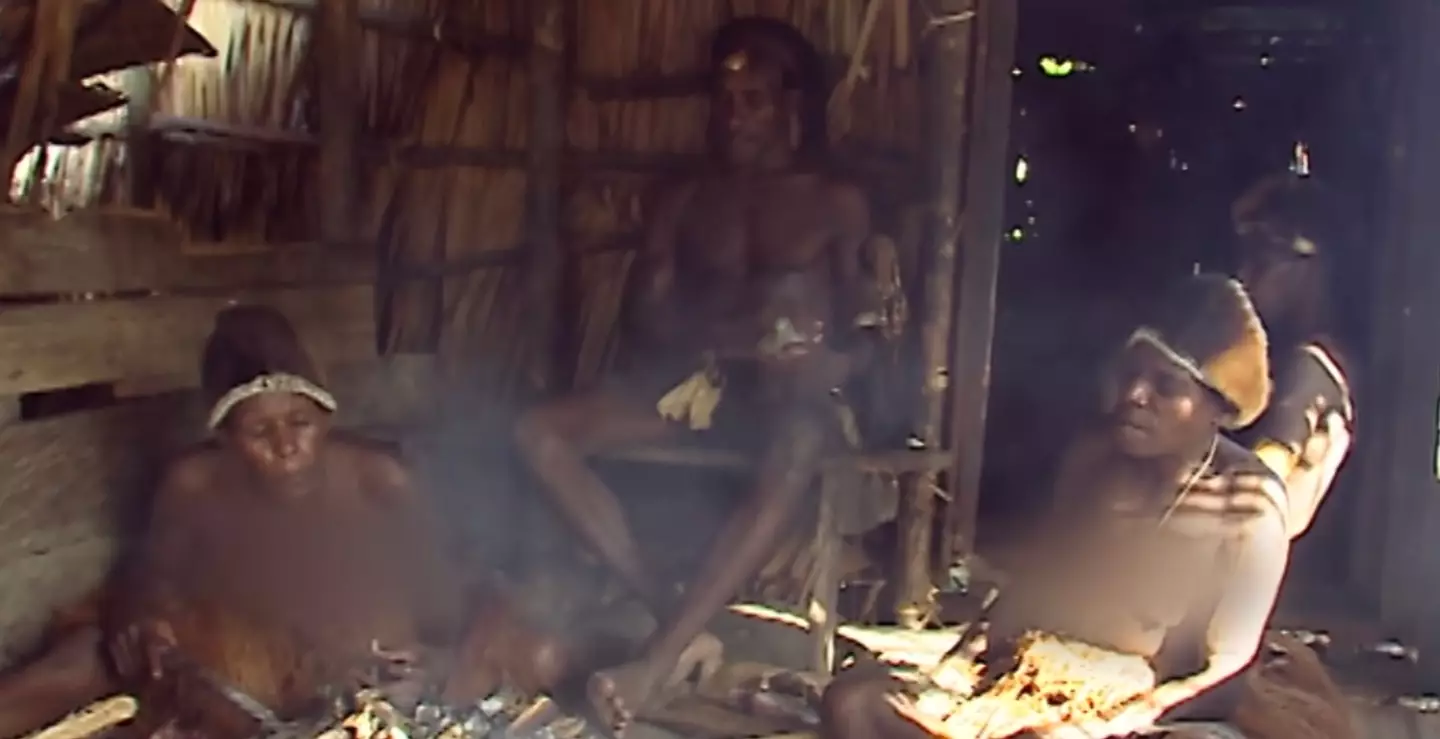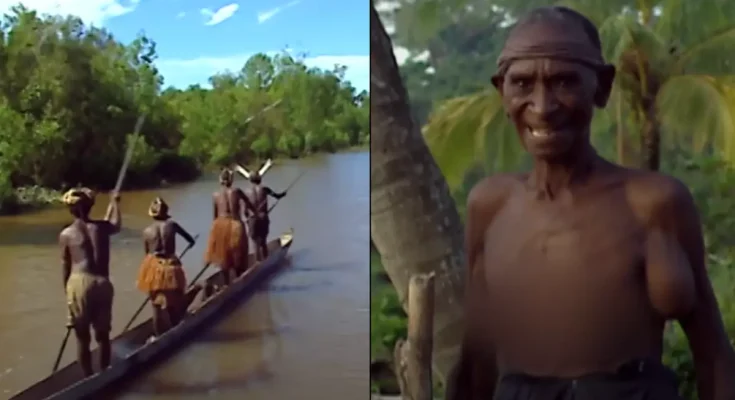If Michael Rockefeller, a member of one of the most prominent families on the planet, didn’t make it out of West Papua, I’m not sure why anyone else would fancy taking their chances there.
But the 23-year-old’s mysterious disappearance in 1961 only made people even more curious about what was going on in the ridiculously remote region and the tribe which inhabit it.
Thanks to this courageous camera crew, we can all get a glimpse of how the Asmat people live without risking our lives to see it – but the footage might leave you with more questions than answers about what happened to Michael.
Documentary makers from Sliced made the same journey which the son of US Vice President Nelson Rockefeller did, but thankfully, managed to return from their extraordinary journey to West Papua, formerly known as Dutch New Guinea.

Extraordinary footage captured the Asmat people going about their daily business (YouTube/Slice)
The crew were well aware of what they were getting into and the potential consequences, explaining to viewers in the video shared in 2022 that it’s not a place where you would turn up unannounced.
They explained they were venturing to a ‘land that has long remained free of outsiders, discouraged by the Asmats’ terrifying reputation as cannibals and headhunters’ – so you can see why it isn’t a tourist hotspot.
“We went to film them, simply to be the witnesses of their untouched culture, in one of the last unexplored regions of the globe, and to better understand their way of life in this singular territory,” Sliced explained.
But the team did not seem phased by all of the conspiracy theories regarding Michael’s fate – even though the leading hypothesis is that he ended up on the Asmat tribes menu.

The tribe all live in large houses and work as a team to sustain themselves (YouTube/Slice)
For those who don’t know, the young explorer set out on his second exhibition to the Asmat region alongside Dutch anthropologist René Wassing, intending to make contact with the locals living there.
But the pair ran into trouble when their 40-foot canoe was capsized near the shore – and although Wassing was later rescued while floating in the water, Michael was never seen or heard from again.
It was originally reported that he had either drowned or was fatally attacked by an animal, but not everyone was convinced and instead suspect that the tribespeople may have eaten him.
Although the documentary showed those in Asmat living a very different way of life to the majority of us, it portrayed them as protectors of their territory and culture who make us lot in the West look pretty lazy, rather than cold-blooded killers.
For starters, they are expert hunter-gatherers who have ‘always survived without cultivating the soil‘.

Women have to provide, while the men protect (YouTube/Slice)
And as they don’t have any refrigeration to rely on to keep food fresh, they are out foraging every single day – with Slice explaining that the women do the fishing, while the men watch over them.
“Although the Azmat are no longer threatened by surprise attacks, they have kept their traditional distribution of tasks,” the video said. “The men defend the territory, while the women are responsible for the family‘s sustenance.”
The people all live in homes that are big enough for entire families, which are built on stakes due to the extremely muddy land in the region – with one tribe member, Rufinus, explaining that ‘everyone works together’ to survive.
Despite there being enough room for him, the 20-year-old told how he and other bachelors sleep in a separate spot, but will later move in with their wife‘s family when they get married.
Getting hitched must go according to tradition – which involves ‘offering a ritual presence’ and killing a cassowary bird.
According to Rufinus’ grandfather though, their ancestors are ‘furious with them’ because of their modernity.
I obviously don’t mean they’re all walking around with iPhones by this, but rather the fact that some of their traditions have slipped over the years.
The main sticking point is the fact that the men in Asmat no longer go head hunting – which sounds exactly like what it is – seeking revenge and taking someone’s head as a souvenir.
Boys returning home with a head was seen as their elevation into manhood, while the cannibalism which accompanied it was merely a side show and a method of foraging for that night.
The tribe believes that death, sickness or any other misfortune is caused by an enemy, so they have to sort of even things out when something like that occurs by continuing the endless cycle of revenge and chopping heads off.



